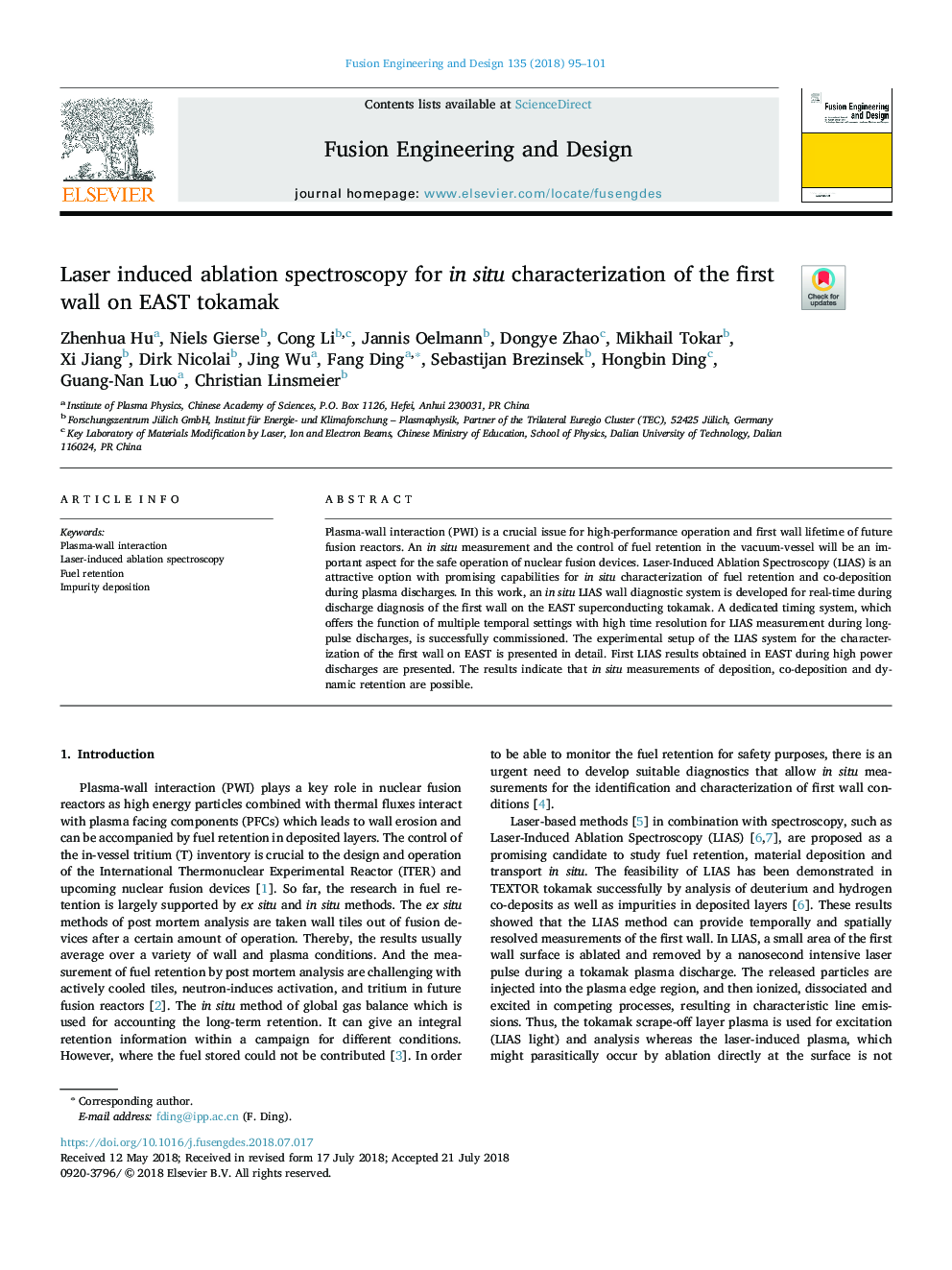| Article ID | Journal | Published Year | Pages | File Type |
|---|---|---|---|---|
| 6742731 | Fusion Engineering and Design | 2018 | 7 Pages |
Abstract
Plasma-wall interaction (PWI) is a crucial issue for high-performance operation and first wall lifetime of future fusion reactors. An in situ measurement and the control of fuel retention in the vacuum-vessel will be an important aspect for the safe operation of nuclear fusion devices. Laser-Induced Ablation Spectroscopy (LIAS) is an attractive option with promising capabilities for in situ characterization of fuel retention and co-deposition during plasma discharges. In this work, an in situ LIAS wall diagnostic system is developed for real-time during discharge diagnosis of the first wall on the EAST superconducting tokamak. A dedicated timing system, which offers the function of multiple temporal settings with high time resolution for LIAS measurement during long-pulse discharges, is successfully commissioned. The experimental setup of the LIAS system for the characterization of the first wall on EAST is presented in detail. First LIAS results obtained in EAST during high power discharges are presented. The results indicate that in situ measurements of deposition, co-deposition and dynamic retention are possible.
Related Topics
Physical Sciences and Engineering
Energy
Energy Engineering and Power Technology
Authors
Zhenhua Hu, Niels Gierse, Cong Li, Jannis Oelmann, Dongye Zhao, Mikhail Tokar, Xi Jiang, Dirk Nicolai, Jing Wu, Fang Ding, Sebastijan Brezinsek, Hongbin Ding, Guang-Nan Luo, Christian Linsmeier,
